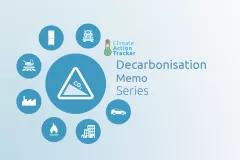The report based its investigation on the fact that to meet the Paris Agreement’s long-term temperature limit, the global energy system must completely decarbonise by mid-century. The Climate Action Tracker examined the trends driving decarbonisation in three key sectors of the global energy system: power, transportation, and buildings—and looked at what can drive rapid transitions in these areas.
Key findings:
Power
Between 2006 and 2015 installed wind power capacity increased by 600 percent, and solar energy capacity increased by 3500 percent. By 2030, solar PV is projected to become the cheapest energy generation source in most countries.
Transport
The report finds a similar trend is beginning in the transport sector, with the production of electric drive vehicles, which exceeded one million sales in 2016. New sales continue to exceed prior projections from only a few years ago. The type of successful policy packages that kick-started the sector often include a focus on targets for takeup, campaigns on behavioural change, infrastructure investment—especially important for electric vehicles—and research and development.
Buildings
The final sector studied in the report is buildings, which is lagging behind the other two sectors, even though there are proven technological solutions that can result in new, zero-carbon buildings. Innovative financial mechanisms to increase the rate of building retrofits, as well as good examples of building codes for new buildings, could drive adoption of these solutions.
The report makes a number of recommendations as to how decarbonisation in those sectors can meet the Paris Agreement challenge, such as increasing flexibility in power systems to integrate larger shares of renewable energy, and more countries adopting policies in the electric vehicle market and on building standards.






